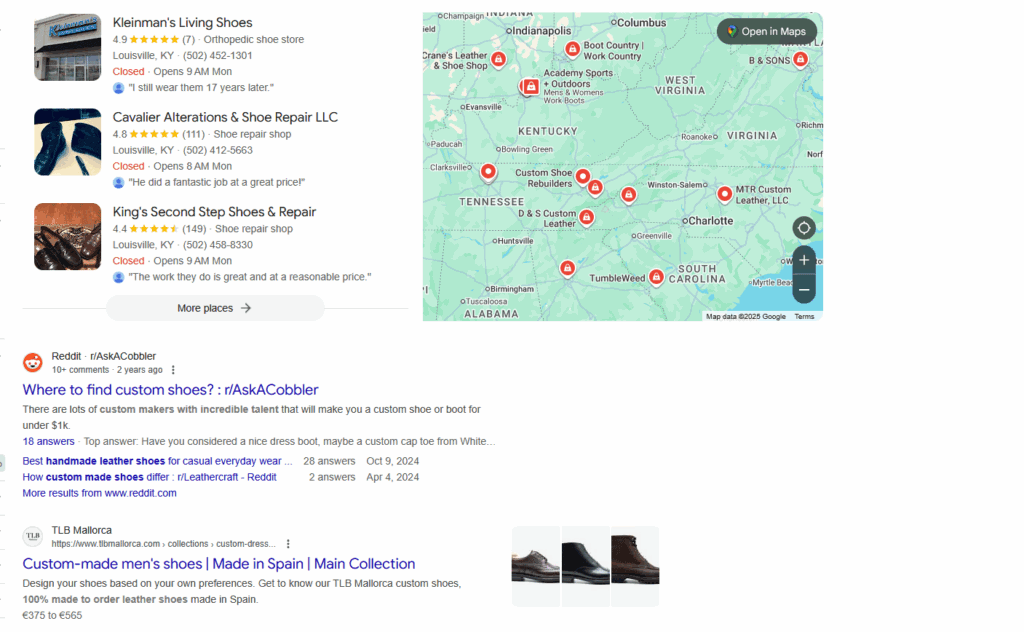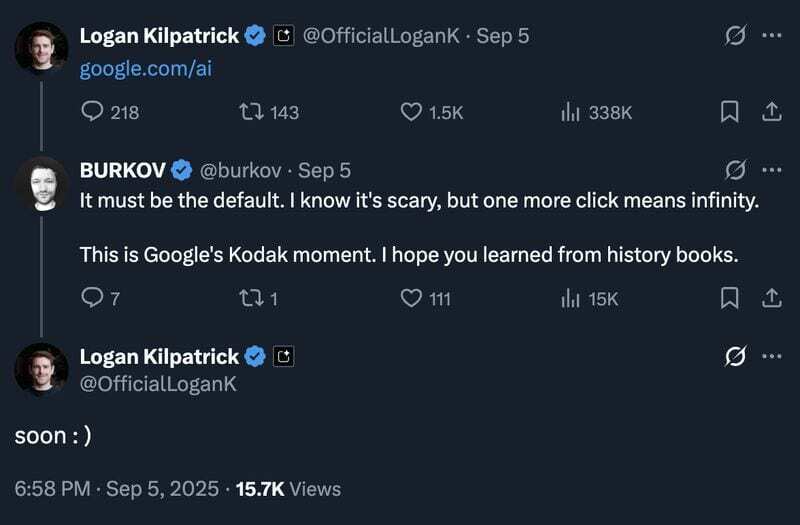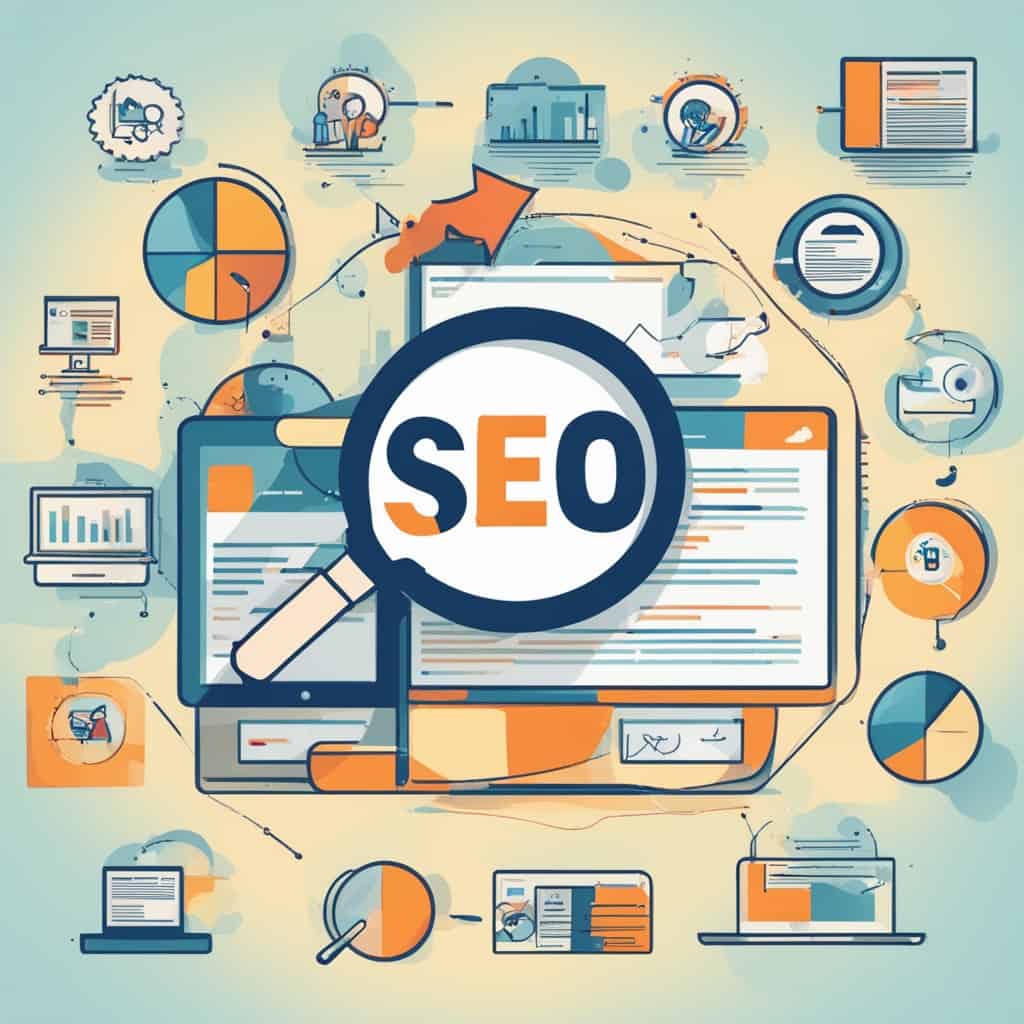The Kodak Moment looms, but we will get into that as we go along.
AI-EIO and SEO: What Small Businesses Need to Know
AI-EIO continues, but let’s frame it against SEO.
SEO has been a source of stress since Google’s early days. Why? Because the system was never designed for everyone to win. No other industry has a secretive practice that dictates who gets visibility, traffic, and money.
Now AI is layered into search. What does that mean for small business owners already overwhelmed by SEO?
How Do You Know if Your SEO is Working?
Most owners fall into one of three groups:
- Learners – They pick up enough SEO to keep pace.
- Quitters – They get spoon-fed until they burn out.
- Followers – They listen to strategists, see results, but don’t know why.
The third group makes up 80% of businesses.
And now? AI muddies the water. Marketers and think tanks keep pushing the myth that “SEO is dead.” But what’s really happening is search shifting to AI-powered answers. If you don’t see traffic on your site, it’s likely being redirected into AI summaries. The trick is learning how to benefit from those summaries instead of fighting them.
Clicks vs. Impressions: Why Metrics Still Matter
Many agencies still brag about impressions. But impressions don’t equal business.
Think of it like this:
- Impressions: People walk past your store and glance in the window.
- Clicks: People step inside and talk to you.
Clicks matter more. And in the AI-driven era, you need to “Get Loud.” That means proving to both algorithms and humans that your business offers the only real solution. Not general answers, but personalized ones that match each customer’s intent.
Optimize everything not just keywords. Keywords are where your ideas start, but never where they finish. So, let’s say you had a keyword of “custom leather shoes”. Custom leathers shoes of old would give you just 10 listings of places that managed to rank for the term and kept a stranglehold on it. Now, the search result looks like this.

But, why does it look like this? Well, that’s because AI Mode and even Gemini are trying to infer why you are searching for custom leather shoes. As those shoes are different than just buying something off the rack, the local stores it will mention to your first and on the wider map will use Local Data to put you somewhere that can best solve your problems fast.
Then when it comes to the traditional search results, it’s going to favor a community forum like Reddit first to pull upon a group of American and Canadian cobblers to find who has the best solution for your results. When that doesn’t work out, then they give you the first European outlet that can ship custom leather shoes to your physical location.
Even more important, because I’m logged into Google during this search…the results filter out shoes for women and children. It also takes into account how fast I make purchase decisions and gives me immediate Local Data results or neighboring states where I can two-day ship these shoes to me. Why? Because the goal of search has pivoted from just existing to existing with a purpose.
If you want to make that switch, you’ve got to Get Loud with Google and show them that you qualify for all of these queues to find your perfect audience.
Why “Keywords Alone” Don’t Work Anymore
Keywords are just the starting point. AI now interprets intent.
Search for “custom leather shoes” today and you’ll see:
- Local results: Stores near you prioritized by location data.
- Community forums: Threads on Reddit where cobblers share recommendations.
- Global results: European shops shipping internationally.
If you’re logged into Google, the results are even more personalized—filtered by gender, purchase habits, and urgency. The lesson: optimize everything, not just keywords.
The Stress of AI for Small Business Owners
Running a business is already overwhelming:
- Sales
- Travel
- Staff management
- Vendor relationships
Add AI and SEO, and most owners don’t have the bandwidth. Some pay their way out, but that’s temporary. Digital demands are permanent. The sooner you learn, the sooner you can fold them into your business plan.
Why Leadership Needs Digital Support
Executives and managers often see AI as either:
- A magic tool that never says no.
- Or an enemy when it pushes back.
In real-world studies across the US, Canada, Mexico, and the UK, many rejected newer models like ChatGPT 5 because they weren’t as “helpful” as before. But here’s the truth: Google is still the interstate. OpenAI is growing, but it’s years behind Google in reach.
So leadership shouldn’t wait. They need guidance to make AI work for business now, not in a decade.
The Missing Piece: AI Help for Small Businesses
Most AI tools are still built for large enterprises. SMB solutions will roll out in 2025, but waiting means falling behind. It’s like handing a towel to someone already drowning. Businesses need practice and preparation now.
That’s why AI-EIO shifts from education to hands-on exercises in upcoming parts.

Where will you be when the Kodak Moment hits?
Nothing makes me feel as old as asking my younger contemporaries to explain the concept of the Kodak Moment. For those that don’t know, Kodak fought the rise of smartphones, digital cameras, etc for a good number of years. But somewhere around 2010/2011, reality hit them in the face. The sea change had happened and customer demand crossed a threshold that interest was never going to return back from ever again.
It’s a scary phenomenon when you’re in it and it can be just as scary as when you see it coming on the horizon. So, now we’re going to begin walking you through how to prep for that time where everything changes and customers expect you to keep up.
If you’re not stressed, then how stressed are you about your employees using it?
I discovered the first wave of 2024 Nike Fiscal Mock-ups with real corporate data back about 6 weeks ago. When Google started indexing ChatGPT basic logs in the last few weeks, more and more companies started seeing their internal data appears to the masses. That was until Google and OpenAI worked together to get a lot of that private. But, it’s a case of too little, too late. I bet you didn’t know you had to worry about that. Some of you are probably saying “my employees wouldn’t put our raw fiscal data into ChatGPT”.
But before you get to that point, I’m going to give you a fresh and understandable AI policy that any size business can use.
AI USAGE POLICY
Our organization supports the responsible use of AI to improve productivity, accuracy, and business outcomes. Employees may only use AI tools that have been approved by management. These tools are provided to assist with tasks such as drafting first-pass documents, summarizing notes, or handling routine data work. AI-generated content must always be reviewed and approved by a human before being shared outside the company. Uploading confidential information into AI systems, using unapproved apps, or applying AI in ways that don’t align with business goals is strictly prohibited.
Access to AI platforms will be controlled through enterprise accounts and monitored for compliance. Managers are responsible for reviewing how their teams apply AI and identifying signs of overreliance or misuse. Regular audits will be conducted to check accuracy, tone, and adherence to this policy. Responsible experimentation is encouraged in designated test environments, but all uses of AI must support our strategic goals and not replace sound human judgment.
By following these guidelines, employees can use AI effectively while protecting company data, maintaining accountability, and ensuring that every application of AI contributes directly to our business objectives.
The Internet isn’t websites anymore, but well maintained data sets
When AI fundamentally changed Search in prolonged chunks, tons of people rolled over and gave up. However, in their desire to always wave the white flag…they ignored the great reset that Google applied to what we know of the online world. So if your websites are now the training data on which the greater world learns how you exist and how you compare to others, then SEO and even content has gone from a good priority to now a necessity on par with your business utilities and accounting.

Refuse to let marketing be a cost center
When I first got into SEO in the industry I mainly practice in now, I was taken aback by how utterly backwards it was. PPC led the way, SEM had been demolished into some backwoods stitchwork that didn’t do anything for anyone and the websites would have been awful in 2009 much less 2019. All of this money and utter cost being sunk into things that didn’t matter, led by people who had no idea what these efforts did at optimal levels and generally created with a devastating lack of planning and master vision.
Media hasn’t been about buying expensive interruptions for over a generation. Marketing is your business plan to earn attention, get loud and establish yourself as the go-to solution for a consumer world’s dedicated needs. It’s not something that comes in after the fact, it starts when your business is getting ready to form a plan and execute.
The longer you delay, the more you segment it, the higher the costs becomes and that’s what we’re fighting against. For those not familiar with the term: the typical business cost centers are HR and IT. They don’t bring in a profit, but they fulfill many needs that you must address to have a functioning modern business.
We’ve got 5 minutes left in the meeting…is my SEO working?
As someone who enjoys SEO and practices it on a daily level for the last two decades…I can tell if something is working within a few minutes of visiting a site. In fact, I can build a short history of every mistake your business has made up to a certain point. Anyone with a degree of expertise can do this, but what they all fail to do is give you a path forward beyond a long term maintenance plan.
Costs are costs and the overall goal to any business is finding a way to stay profitable, keep things rolling and not lose your mind in the process. People like me, the various agencies you will meet, the technicians you will have work on your sites all have 1 goal in comment. That is to keep you alive.
Some of the plans might not gel with what you thought was going to happen from the start, but that’s why a good marketing and tech team are here. Ongoing resources and a steady hand through incredible market changes will help you as your goals increase.
ALWAYS REMEMBER
Too many businesses treat marketing like overhead. But marketing drives attention, sales, and positioning. Done right, it’s not an expense—it’s your business plan in action. Delay or fragment it, and costs skyrocket.
A fun exercise to leave you with before the real work begins in Part 3
Start Using AI in a Small Equipment Shop
1. Pick One Problem to Solve First
Write down a simple business headache you face. Examples:
- “We keep answering the same questions about tractor parts.”
- “Our Facebook page hasn’t been updated in weeks.”
2. Match It to an Easy AI Use
- For common questions → Use an AI tool like ChatGPT to draft answers.
- For social media → Let AI suggest a few weekly posts about new arrivals, seasonal deals, or maintenance tips.
- For product listings → Use AI to write short descriptions of parts or machines.
What does ‘trained with your shop’s product details’ mean?
It doesn’t mean building a complex AI system. It simply means giving the AI your own information before asking it to help. For example: copy and paste your product sheet, parts catalog, or service pricing list into the chat. Then ask it to “write customer-friendly answers” or “make a short ad” using those details. You’re not teaching it forever, you’re just feeding it the right context so the answers fit your shop.
3. Try It Safely for 30 Days
- Use AI for that one problem only.
- Have someone double-check every AI response before posting or sending it to customers.
- Keep notes on time saved, customer reactions, and mistakes to avoid.
4. Measure Results
At the end of the month, ask:
- Did this save us time?
- Did it help us talk to more customers?
- Did it make our work easier without hurting accuracy?
If yes, pick another small problem and repeat.



